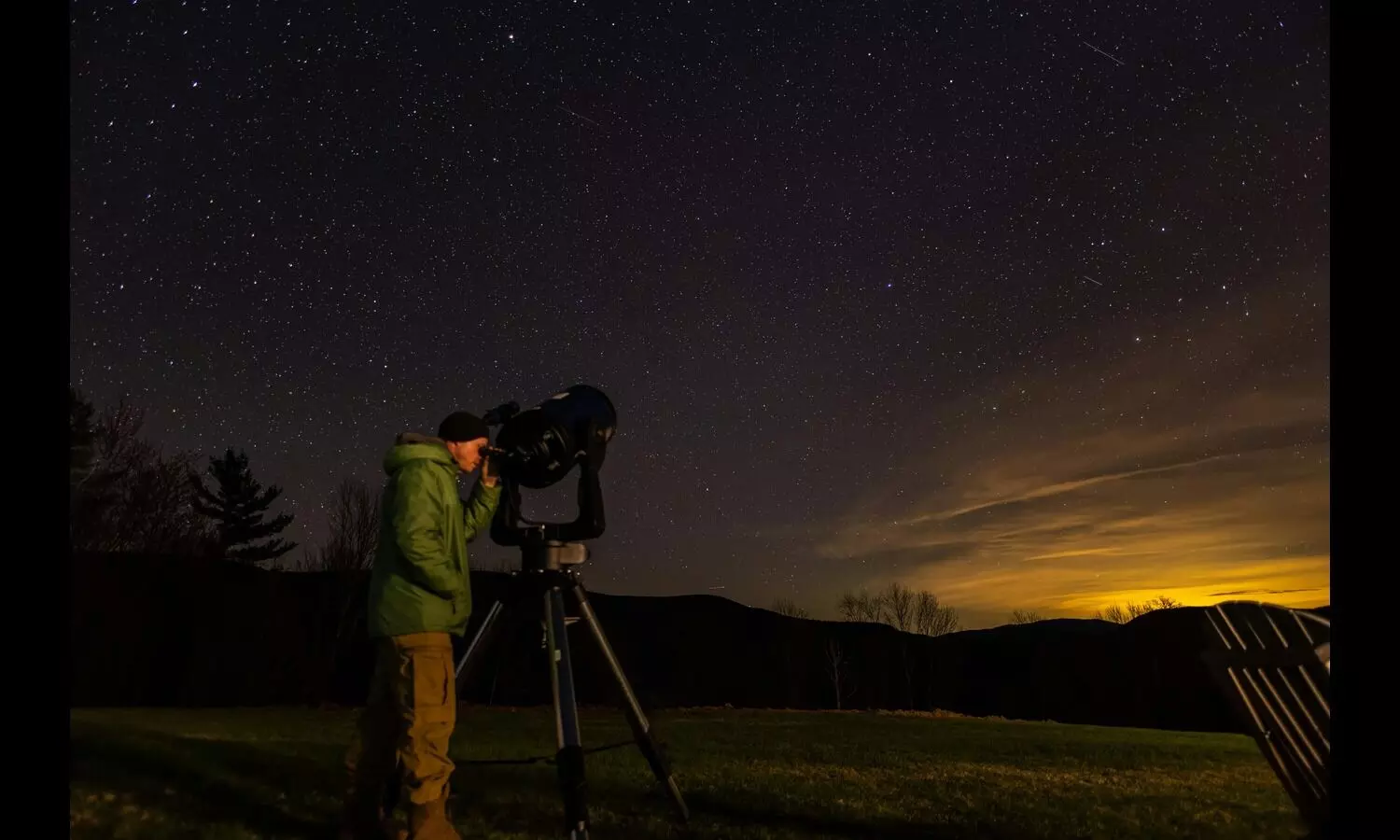Don't Miss Seven-Planet Alignment in February 2025 Night Sky
Seven planets—Mercury, Venus, Mars, Jupiter, Saturn, Uranus, Neptune—align in February 2025. Learn how to watch this rare celestial event.
image for illustrative purpose

A rare astronomical event is set to occur in late February 2025, as seven planets—Mercury, Venus, Mars, Jupiter, Saturn, Uranus, and Neptune—will appear together in the night sky. While not perfectly aligned, the planets will form an arc due to their shared orbital plane in the Solar System, providing a unique opportunity for stargazers.
This celestial phenomenon, often referred to as a planetary alignment, happens when multiple planets gather on one side of the Sun as viewed from Earth. Though such alignments are not uncommon, the inclusion of seven planets makes this event particularly noteworthy.
For observers on Earth, the brighter planets—Mercury, Venus, Mars, Jupiter, and Saturn—will be visible to the naked eye. However, spotting Uranus and Neptune may require binoculars or a telescope due to their dimmer appearance. Mercury, the last to join the lineup, will make the alignment complete for one night only.
Astronomer Jenifer Millard of Fifth Star Labs in the United Kingdom highlighted the experience of observing these planets firsthand. “Seeing these celestial objects with your own eyes offers a connection to the universe that no image can replicate,” she said.
The planets in the Solar System orbit the Sun along a relatively flat plane, but their varying speeds mean alignments occur periodically. Mercury, the fastest planet, completes an orbit in just 88 Earth days, while Neptune takes over 165 Earth years. Occasionally, this difference in orbital timing causes several planets to cluster together from Earth's perspective.
While the planets will not form a straight line, their arrangement in an arc is a result of their shared orbital plane. This visual effect has fascinated astronomers and casual observers alike for centuries.
Planetary alignments have long been used by astronomers to study celestial mechanics and discover exoplanets. The "transit method," for example, detects planets outside our Solar System by observing the dimming of a star's light as a planet passes in front of it. This technique has led to discoveries such as the Trappist-1 system, a red dwarf star with seven Earth-sized planets.
Astronomical alignments also enable the study of distant galaxies through gravitational lensing. This process magnifies light from far-off galaxies using the gravitational pull of closer galaxy clusters, offering insights into the early universe.
In 1977, NASA capitalized on a similar alignment involving Jupiter, Saturn, Uranus, and Neptune to launch the Voyager spacecraft. Voyager 2 utilized the alignment to visit all four planets, becoming the only probe to explore Uranus and Neptune.
Robert Cameron, a solar scientist at the Max Planck Institute for Solar System Research, noted that while alignments spark interest, there is no evidence linking them to changes in solar activity. “Observations do not support the idea that planetary positions influence the solar cycle,” he explained.
For those interested in witnessing this event, clear skies and minimal light pollution will be essential. Astronomers also speculate that extraterrestrial civilizations, if they exist, might use similar alignments to study or communicate across the galaxy. Nick Tusay, a graduate student at Pennsylvania State University, remarked, “Such alignments could present opportunities for alien civilizations to conduct their own observations or send signals.” This seven-planet alignment will offer a rare chance to connect with the universe.

